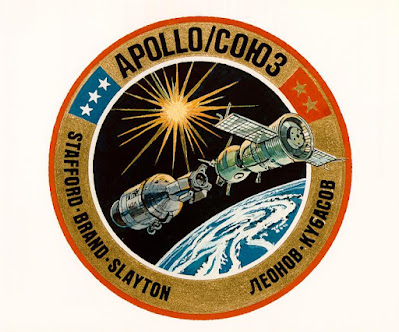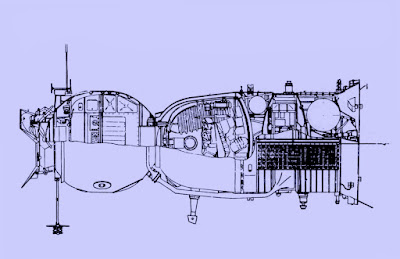ASTP
After
nearly a year and a half of not having any Americans in space we space buffs
were actually looking forward to this thing called the Apollo-Soyuz Test
Project (ASTP).
Launched
on July 15, 1975 ASTP did not have its roots in science, discovery or
exploration. ASTP was, in fact, little more than a political exhibition
conducted in space. Amid the atmosphere of the Strategic Arms Limitation Treaty
of 1972, better known as SALT-1, the Nixon administration cooked up the
prospect to have an American Apollo vehicle rendezvous and dock with a Soviet
Soyuz spacecraft in Earth orbit. It would use up one of the final remaining
Apollo spacecraft, one of the final flight-ready Saturn IB boosters, and all of
the remaining Apollo budget. For Nixon, ASTP also would satisfy his desire to
best his historical political rivals. Too bad for him that he was compelled to
resign from the presidency in disgrace before ASTP was stacked in the VAB.
From the
perspective of a space buff Nixon’s legacy in spaceflight was that AS-210, the
ASTP Saturn IB, was launched on a Tuesday and on the following Friday 1,200
contractor workers at KSC were issued their pink slips. Sadly, it was only the
beginning of an aerospace industry-wide recession.
To most
enthusiasts of NASA and the U.S. space program, ASTP meant little more than
being able to witness an Apollo spacecraft fly again for the first time in more
than a year.
Without question the most exciting aspect of ASTP was the fact that the crew would contain one of the original seven astronauts, none other than Deke Slayton. Anyone who knew anything about NASA knew Deke’s story. He originally had been selected as the fourth of the seven original astronauts to fly, with his mission being one that would mirror John Glenn’s three orbits. He had named his capsule “Delta 7,” but as launch day drew near a single doctor looked at a minor heart fibrillation and decided to make it into a major issue. Slayton was grounded and ended up being the guy who selected new-hire astronauts and formed crews for missions. Then, some nine years after he had been grounded, Slayton began taking a regiment of vitamins to combat a cold and soon it dawned on him that his heart had not fluttered in months. After being examined extensively at the Mayo Clinic he was cleared for flight, and shortly thereafter he was cleared for spaceflight. The only problem was that all the remaining space missions were already assigned crews. Fortunately, along came one additional mission, which was ASTP. Slayton recommended himself for that mission. There was no one in NASA or in the spaceflight community who could have argued with that selection. Slayton’s only remaining problem was that he would have to learn to speak basic Russian.
Although there was very little technical advancement involved in ASTP, the political fluff was enough to draw the continued attention of the news networks. These same networks, who collectively ignored the splashdown of the Skylab 4 crew after their world record stay in space, now went all out to cover ASTP.
Now, in order for ASTP to actually happen, the ever-paranoid Soviets had to lift the covers. Additionally, the US demanded that our crews and NASA officials must be allowed to tour the top-secret Baikonur Cosmodrome launch site in Kazakhstan. Also, NASA insisted that US astronauts be allowed to examine the operational hardware such as the Soyuz spacecraft that would fly on the mission and the booster that would place it into orbit.
Although there was very little of ASTP for someone like me to get excited about, it did inspire Ravell to produce a 1:96 scale model kit for the event. The kit was based on their Apollo lunar landing kit of the same scale and it used the same CSM. New was the “International Docking Module” and a detailed 1:96 version of their long shrouded in secrecy Soyuz. I bought one of the kits in hope that it would annoy the Soviets.
WATCH FOR
PART 2







L.jpg)
No comments:
Post a Comment